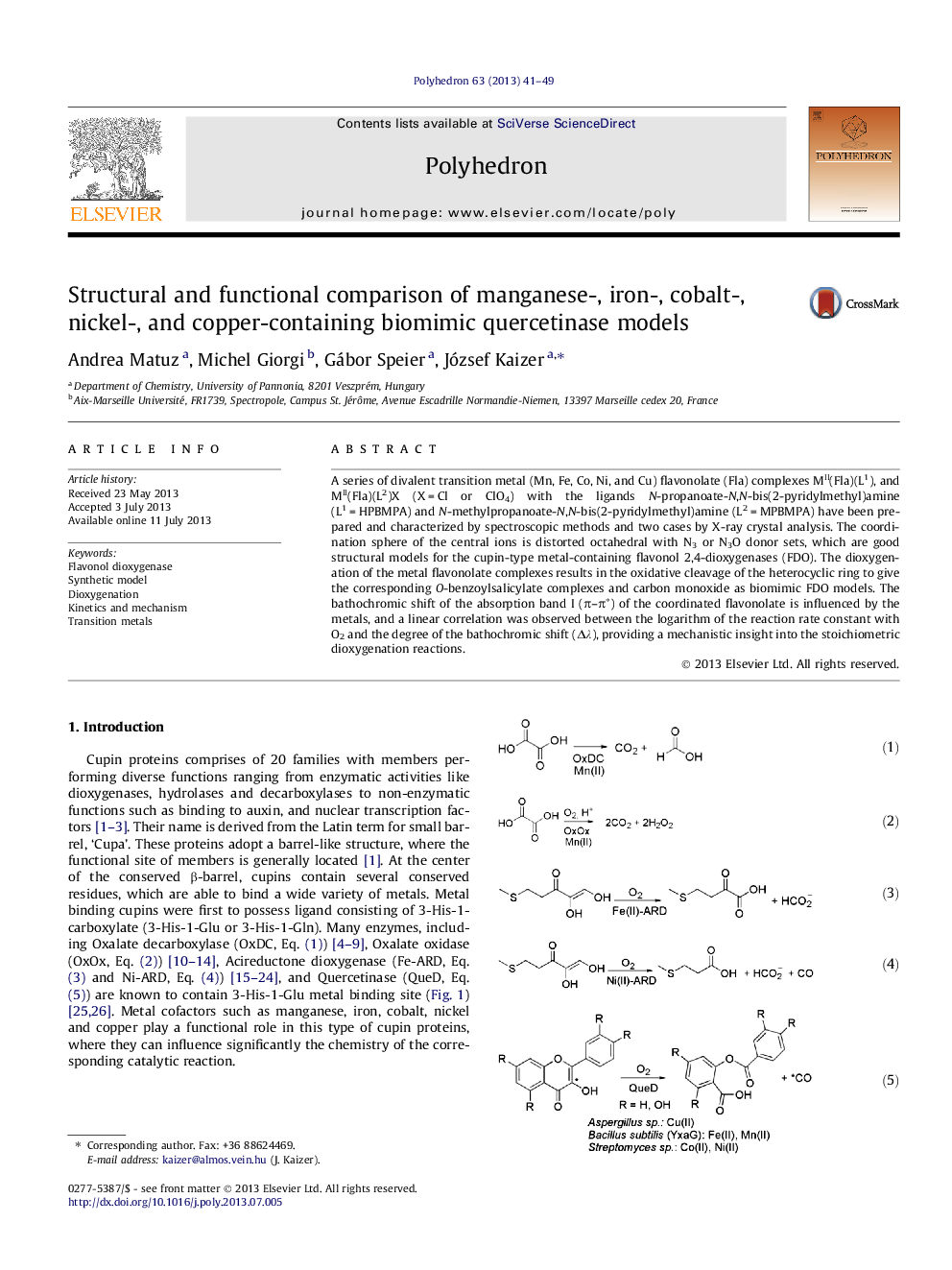| Article ID | Journal | Published Year | Pages | File Type |
|---|---|---|---|---|
| 1335554 | Polyhedron | 2013 | 9 Pages |
A series of divalent transition metal (Mn, Fe, Co, Ni, and Cu) flavonolate (Fla) complexes MII(Fla)(L1), and MII(Fla)(L2)X (X = Cl or ClO4) with the ligands N-propanoate-N,N-bis(2-pyridylmethyl)amine (L1 = HPBMPA) and N-methylpropanoate-N,N-bis(2-pyridylmethyl)amine (L2 = MPBMPA) have been prepared and characterized by spectroscopic methods and two cases by X-ray crystal analysis. The coordination sphere of the central ions is distorted octahedral with N3 or N3O donor sets, which are good structural models for the cupin-type metal-containing flavonol 2,4-dioxygenases (FDO). The dioxygenation of the metal flavonolate complexes results in the oxidative cleavage of the heterocyclic ring to give the corresponding O-benzoylsalicylate complexes and carbon monoxide as biomimic FDO models. The bathochromic shift of the absorption band I (π–π∗) of the coordinated flavonolate is influenced by the metals, and a linear correlation was observed between the logarithm of the reaction rate constant with O2 and the degree of the bathochromic shift (Δλ), providing a mechanistic insight into the stoichiometric dioxygenation reactions.
Graphical abstractThis study reports the preparation and characterization of a series of divalent transition metal (Mn, Fe, Co, Ni, and Cu) flavonolate (Fla) complexes MII(Fla)(L1), and MII(Fla)(L2)X (X = Cl or ClO4) with N3 or N3O donor sets, which are good structural and functional models for the cupin-type metal-containing flavonol 2,4-dioxygenases (FDO).Figure optionsDownload full-size imageDownload as PowerPoint slide
